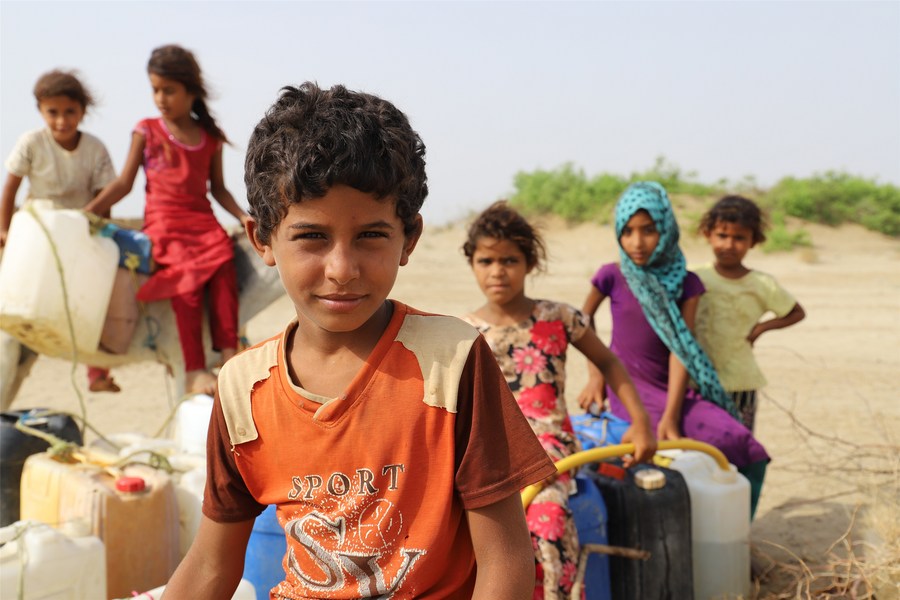WASHINGTON, Feb. 22 (Xinhua) -- Despite additional funding needs, two-thirds of low- and lower-middle-income countries have cut their public education budgets since the onset of the COVID-19 pandemic, according to a new report released Monday.

Children wait to fill containers with water from a tank in Midi District of Hajjah Province, Yemen, on June 12, 2020. (Photo by Mohammed ALwafi/Xinhua)
The Education Finance Watch 2021, jointly released by the World Bank and the United Nations Educational, Scientific and Cultural Organization (UNESCO), said that education budgets are not adjusting proportionately to the challenges brought about by COVID-19, especially in poorer countries.
In comparison, only one-third of upper-middle and high-income countries have reduced their budgets, the report showed, adding that these budget cuts have been "relatively small thus far."
"But there is a danger that future cuts will be larger, as the pandemic continues to take its economic toll, and fiscal positions worsen," it added.
The annual report noted that these differing trends imply a significant widening of the "already large spending disparities" seen between low- and high-income countries.
"The learning poverty crisis that existed before COVID-19 is becoming even more severe, and we are also concerned about how unequal the impact is," Mamta Murthi, World Bank vice president for human development, said in a statement.
"External financing is key to support the education opportunities of the world's poorest," said Stefania Giannini, assistant director-general for education at UNESCO.
"Yet donor countries are likely -- and some have already begun -- to shift their budget away from aid to domestic priorities. Health and other emergencies are also competing for funds," Giannini said. "We foresee a challenging environment for countries reliant on education aid."
UNESCO estimates that education aid may fall by 2 billion U.S. dollars from its peak in 2020 and not return to 2018 levels for another six years.


